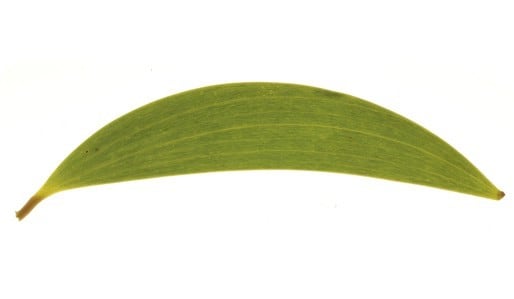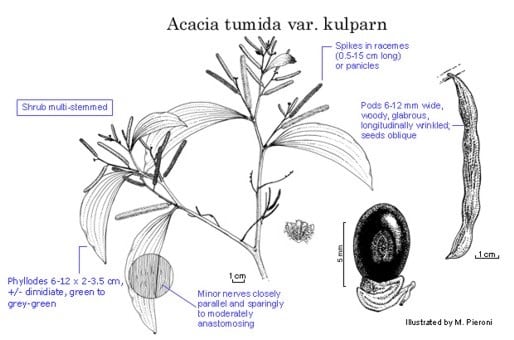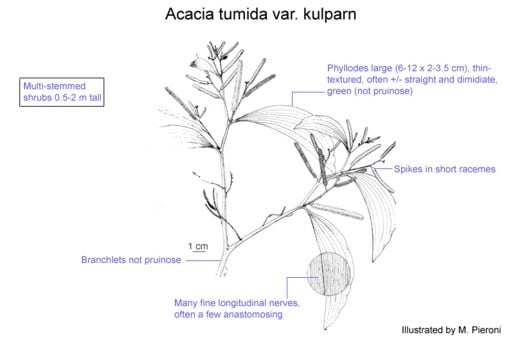Acacia tumida var. kulparn M.W.McDonald
WATTLE
Acacias of Australia
Common Name
Kulparn, Walmajarri (Aboriginal people of the Great Sandy Desert)
Family
Fabaceae
Distribution
Occurs in the Tanami Desert, N.T., westward through the Great Sandy Desert to the 80 Mile Beach and the vicinity of Broome, W.A.
Description
Multi-stemmed shrub mostly 0.5–2 (–3) m high, rarely prostrate, crown ±sparse. Bark smooth. Branchlets often flexuose. Adult phyllodes 6–12 cm long, 20–35 mm wide, straight and dimidiate or sometimes sub-falcate, glabrous, bright green and not pruinose or grey-green and lightly pruinose. Peduncles 4–6 mm long; spikes 2–4.5 cm long. Pods straight to curved, sometimes openly coiled or twisted, 6–12 mm wide. Seeds 7–9 mm long, 4–5 mm wide.
Phenology
Flowers June–July.
Habitat
Grows on slightly acidic, red sand or sandy loam on dunes and plains in low open shrubland, often associated with hummock grasslands dominated by spinifex (Triodia sp.).
Specimens
N.T.: valley between Pargee and Gardiner Ranges, far W Tanami, D.E.Albrecht 7803 (DNA, MEL). W.A.: James Price Point, c. 50 km N of Broome, B.R.Maslin 7221A (PERTH); Anketell Ridge, Great Sandy Desert, A.S.Mitchell 1177 (AD, NT, PERTH).
Notes
Many of the most inland plants are conspicuously pruinose whereas those from more westerly areas are less pruinose or not pruinose. Fire-tolerant with plants resprouting rapidly from base when burnt.
Published since the Flora of Australia treatment of the family.
FOA Reference
Data derived from Flora of Australia Volumes 11A (2001), 11B (2001) and 12 (1998), products of ABRS, ©Commonwealth of Australia
Author
B.R.Maslin
This identification key and fact sheets are available as a mobile application:
URL: https://apps.lucidcentral.org/wattle/
© Copyright 2018. All rights reserved.













